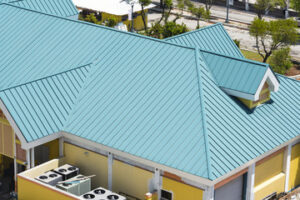Every home begins its dialogue with the sky through the roof. This thin veil between shelter and storm holds untold significance. People often overlook its silent strength until leaks remind them. But Roofing Murfreesboro is no longer just about covering beams with tiles.

Modern roofing has quietly evolved into an architectural statement. It’s where insulation, energy control, and resilience converge. No longer just utilitarian, roofs reflect lifestyle and foresight. Materials are now chosen not just for weather resistance, but for climate logic.
With weather becoming more aggressive, roofing systems are becoming smarter. Sensors integrated into shingles can detect impact and moisture. These systems send alerts before leaks or ice dams grow serious. It’s no longer reactionary—it’s predictive care.
Green roofing isn’t new, but its application has deepened. Rooftops are turning into self-sustaining ecosystems. Not only do they reduce heat, but they also grow herbs, retain rain, and purify air. Some setups even support pollinator species at risk.
Designers now consider a roof’s impact on neighborhood microclimates. A reflective surface might bounce heat away, but dark ones may benefit colder zones. Localized planning has become as important as structure. Thoughtful roofing can balance temperatures across city blocks.
Another rising element is energy independence. Integrated solar solutions aren’t just panels—they’re seamless tiles. These mimic traditional materials while capturing sunlight efficiently. It’s power without the panel glare.
Noise absorption is becoming a silent demand. In noisy environments, roofs are expected to dampen chaos. Layered materials that trap sound between sheets are becoming standard. Peace now starts above, not within.
The rise of modular housing has impacted roof design too. Factory-built segments require roofs that click into place fast. Lightweight, durable panels shaped with precision dominate this space. Speed, durability, and alignment rule the design principles.
Climate responsiveness is another invisible revolution. Adaptive roofs now change shape depending on temperature. They expand, contract, and breathe to reduce stress on internal systems. It mimics the behavior of living organisms under external stress.
Material science also fuels the transformation. Composite materials are lighter and smarter. They know when to repel moisture, when to retain warmth. This interaction makes the home more energy efficient year-round.
Roofs have started carrying their own weight—literally. Weight-distributing technologies allow the structure to handle wind stress better. With climate unpredictability, roofs must shift pressure away from weak points. These systems distribute the load in microseconds.
There’s also a shift toward circular sustainability. Old roofing materials are no longer thrown out. They’re ground, recycled, and reintegrated into new panels. What once sheltered becomes part of the next shelter.
Invisible coatings are doing visible work. UV-reactive finishes now keep roofs cool without reflective glare. These coatings resist algae, mold, and grime while looking sleek. It’s minimal care with maximal performance.
Urban design has made aesthetics just as vital. Roofs must now match facade textures and urban themes. Seamless transitions from wall to roof enhance architectural unity. A roof isn’t separate—it’s now a fifth elevation.
Smart homes have forced roofing to get smarter too. Integrated antennas, rainwater sensors, and AI-controlled vents are on the rise. They interact with the home’s internal systems like thermostats and HVACs. It creates a breathing building.
Thermal comfort now starts overhead. Phase-changing materials are being tested to store heat during the day. At night, they release it slowly into the home. This passive warming reduces energy bills significantly.
Skylights are no longer static. They open on schedule, tint automatically, and even harvest solar energy. They don’t just let in light—they enhance indoor air quality and rhythm. It’s wellness embedded into the ceiling.
One overlooked element is wind behavior. Roofs now redirect wind currents for efficiency. They can channel airflow for cooling or disperse it to avoid lift damage. It’s wind engineering without moving parts.
Fire-resistant roofing is more vital than ever. Urban heat combined with dry weather means higher risks. Materials are now developed to delay ignition and self-extinguish. Safety no longer compromises design.
Inspections are being replaced by drones and infrared tech. These tools detect heat pockets, moisture, and displacement. Human error is eliminated, and results are instantly actionable. Maintenance is now remote-controlled.
In flood-prone areas, roofing contributes to water management. Specially angled designs funnel runoff into storage tanks. These designs reduce ground saturation and reuse water wisely. The roof becomes the first responder to heavy rainfall.
Acoustic science is also influencing roof profiles. Subtle ridges and undulations scatter sound waves. It reduces echo inside large spaces like studios or lofts. Even the angle of a slope affects how sound behaves below.
A cultural trend is also reshaping priorities. Homes are reflecting personal values, and roofs symbolize that vision. Whether green, solar, or reflective, the choice speaks volumes. Roofing is now an extension of identity.
Digital modeling helps test roofing before it’s built. Designers simulate wind, sun, and weight variables in seconds. Errors are caught digitally, not physically. This speeds up design and saves resources.
One fascinating area is biomimicry. Roofs inspired by beetle shells, pinecones, and desert plants are emerging. These models adapt to moisture, light, and heat in real-time. Nature offers the blueprint for resilient living.
The psychology of space has reached the top too. A calm roofscape can improve occupant well-being. Soft textures, muted tones, and gentle slopes affect mental health. It turns shelter into a sanctuary.
Building codes are catching up with innovation. Once conservative, guidelines now encourage green and adaptive solutions. There’s room for experimentation as long as safety isn’t compromised. This has opened doors for creative forms.
Digital integration also extends to maintenance alerts. Apps now warn homeowners of roof performance issues. Everything from blocked drains to missing tiles can be flagged. It’s proactive roofing support.
Construction techniques are evolving with better bonding agents. Cold adhesives are replacing heat-based methods. This reduces installation risks and speeds up timelines. Safer for workers, faster for homeowners.
Roofs now interact with indoor lighting. Translucent materials soften daylight and reduce glare. Artificial light sensors adjust based on roof-tinted skylights. It balances mood and productivity inside.
High-rise buildings have also transformed roofing logic. These roofs double as gardens, pools, or event decks. Load-bearing design and waterproof layering make it possible. Vertical living finds horizontal leisure.
The role of color has deepened in function. Cooler hues reflect sunlight and preserve internal temps. Pigments are now being engineered at the nano level. Shade and shine are more than aesthetics—they’re energy choices.
Architects are exploring origami-inspired designs. Foldable roofs shift shape based on need or season. These roofs offer shade in summer and sun in winter. Movement creates energy, shade, and surprise.
All-season performance is the goal. Whether it’s snow, sun, hail, or wind, one system should do it all. Hybrid roofing is being tested to adapt per climate shift. It’s a one-roof-fits-all model built on intelligent layering.
Even retrofitting is changing. Old buildings no longer get removed tiles. Instead, thin overlays enhance the surface without structural change. It’s heritage preservation with modern performance.
The line between indoor and outdoor is also blurring. Roof terraces now double as living rooms. With insulation, weatherproof furniture, and tech, they’re usable year-round. Rooftops are no longer dead spaces.
In high-velocity wind zones, anchoring systems have become dynamic. Roofs adjust tightness as gusts increase. These mechanical responses reduce pressure on beams. It’s responsiveness shaped by physics.
There’s also interest in transparent solar roofs. They let in filtered light while generating power. These are great for spaces like greenhouses or studios. The roof becomes a power generator and light conductor.
Lastly, there’s an emotional dimension. The sound of rain, the view from a roof window, the warmth it provides—all matter. Roofing isn’t just engineering—it’s experience. The roof becomes the storyteller of every storm.
As the sky continues to challenge us, roofing will rise to meet it. It’s no longer the passive cap on a home. It’s the intelligent, adaptable crown of tomorrow’s architecture. And its voice is only getting louder.
